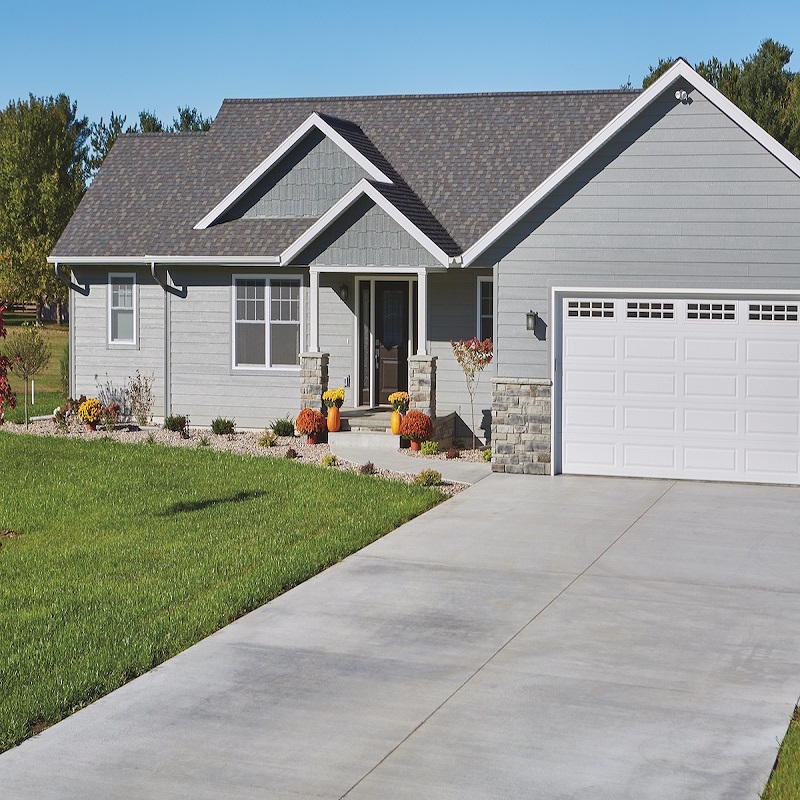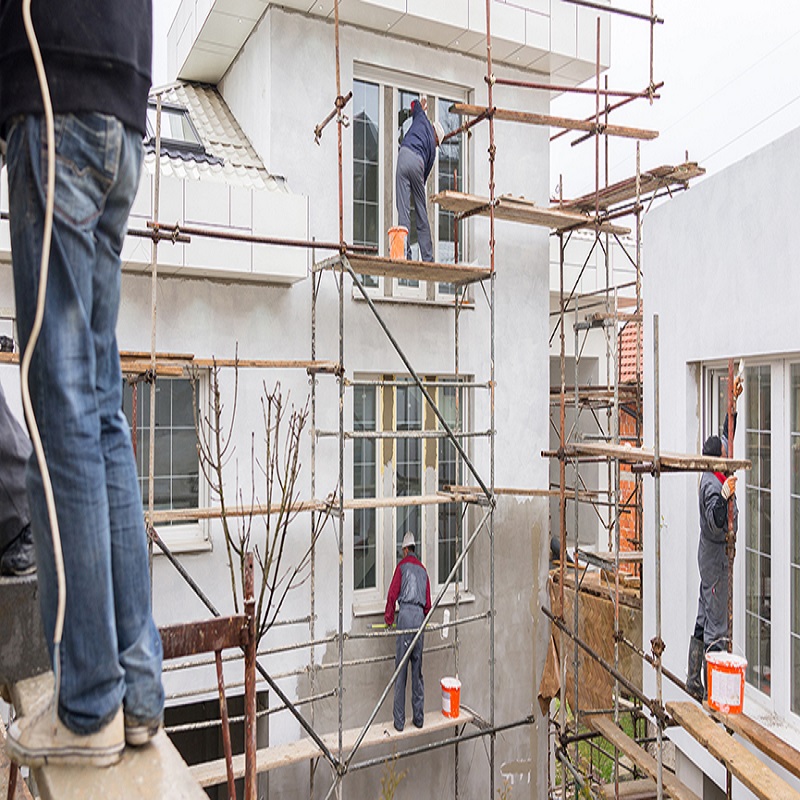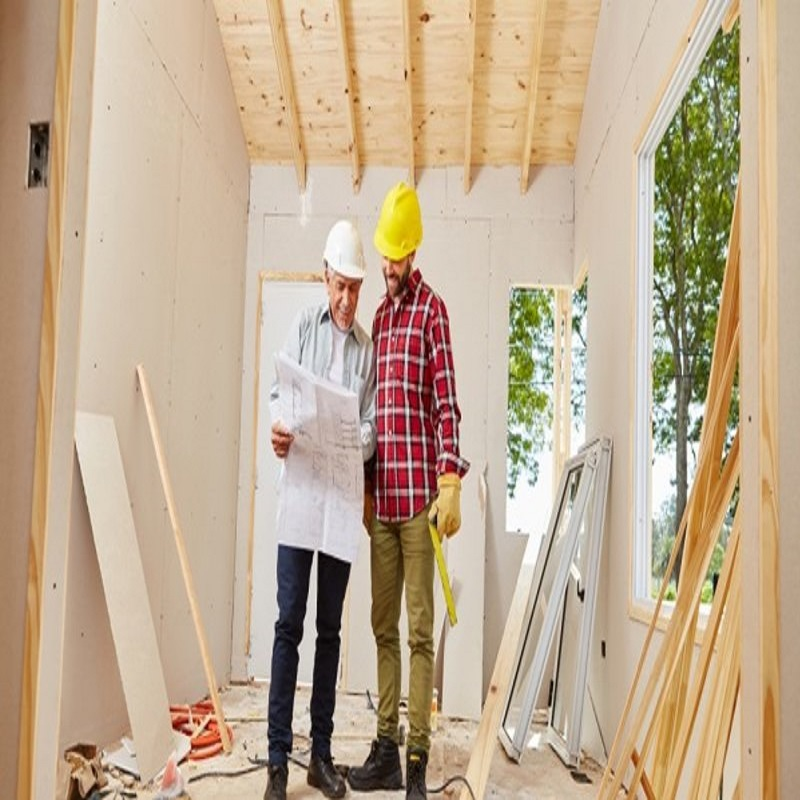Brickwork
Or Call: (020) xxxx–xxxx
Brickwork is a type of construction that uses bricks to form an external surface. Brickwork can be used for anything from building homes to making paths in the garden. It has many benefits, including being very durable and aesthetically pleasing.
Bricklaying is an ancient skill with roots back in Mesopotamia around 6000 BC. The earliest known brick structures are found there and date to around 3500 BC. This blog post will give you everything you need to know about brickwork!
What is brickwork?
Brickwork is the process of building with bricks and other forms of masonry units. It is a type of construction that you can build anything from houses, paths in the garden, walls or chimneys.
However, it wasn’t until the development of fired bricks around three millennia ago that bricklaying would become a common practice across most civilisations and cultures throughout history up to modern times.
What are the benefits of brickwork?
Brickwork is a very durable and robust building material. It also has the benefit of being porous. It absorbs moisture from the atmosphere during humid periods and releases this water vapour into dryer conditions, allowing for high thermal comfort.
The bricks are fire-resistant and weather-resistant, mainly when treated with modern waterproofing materials (e.g. breathable membranes).
The types of brickwork
Many types of brickwork are used in different projects across the UK; it is essential to know which type you need for each job when planning the project.
• Stretcher bond
The stretcher bond is the most common brickwork used to build houses, paths in gardens and walls. These are made with alternating courses with headers (laid on their side) at one end of each course or row.
This pattern results in a strong structure that lends itself well to cavity wall construction where we can fill blocks with insulation between an outer skin of bricks and inner lining bricks.
This makes it both thermally comfortable and highly energy efficient when correctly using good quality materials such as Dual-wall Polyethylene drainage pipes for waterproofing membranes under floor slabs instead of traditional PVC channels without compromising soundproofing elements thanks to its high density.
• English bond
The English bond is a bricklaying pattern where the bricks alternate stretcher courses and headers in each course.
This is a prevalent method of building because it does not use any non-standard bricks, which means that we can buy bricks from local suppliers instead of having to order them specially. It also makes for an even wall surface when well laid out without too much variation between one row and another or significant variations in header size compared to stretchers across different rows.
• English garden wall
The English garden wall bond is a bricklaying pattern generally used for garden walls. It comprises bricks laid as stretchers with headers at each end of every third course and sometimes in the middle of alternate courses.
It is helpful for garden walls because it is easy to build and doesn’t require the joints between bricks of different courses to line up.
• English cross bond
The English cross bond is another bricklaying pattern used in garden walls. It consists of alternating courses laid as headers and stretchers, but the joints between different courses line up vertically to form a crisscross pattern on each wall face.
This brickwork is easy to build and has a neat appearance. The English cross bond can be used for garden walls and makes an attractive wall in its own right.
• Flemish bond
The Flemish bond is one of the bricklaying patterns used to make English garden walling. It consists of alternating courses laid as stretchers and headers but with half-bricks at the end of every second course to form a herringbone pattern on each wall face.
This particular type of brickwork does not require that joints between bricks in different courses line up vertically or horizontally, making it easy for beginners! You can find this kind of brickwork in many English gardens because it has an attractive appearance that hides any unevenness in your laying work.
• Flemish garden wall (also called Sussex bond)
The Flemish garden wall has an alternating header-stretcher configuration that creates a distinctive diamond shape appearance when viewing from either side. We can use the same pattern to create different shapes depending on whether the desired effect is rectangular or triangular. This type of brick may have been trendy during Victorian times when there was more emphasis on aesthetics than structural integrity.
• Monk bond
The Monk bond is a brickwork pattern that uses three stretchers for every two headers in each course.
This makes for a solid wall because the bricks are laid together. Still, it does require non-standard sized or shaped bricks that can be difficult to buy locally. It also makes laying more complicated as fewer courses of uniform size, making layout much harder. The lack of standardised bricks means this method is often seen in older buildings when we use traditional materials rather than modern ones.
• Header bond
The header bond is a brickwork pattern that uses three headers for every two stretchers in each course.
This makes for a solid wall because the bricks are laid so close together. Still, it does require non-standard sized or shaped bricks that can be difficult to buy locally. It also makes laying more complicated as fewer courses of uniform size, making layout much harder. The lack of standardised bricks means this method is often seen in older buildings when we use traditional materials rather than modern ones.
• Stack bond
The stack bond is a brickwork pattern that uses four stretchers for every three headers in each course.
This makes for a solid wall because the bricks are laid so close together. Still, it does require non-standard sized or shaped bricks that can be difficult to buy locally. It also makes laying more complicated as fewer courses of uniform size, making layout much harder. The lack of standardised bricks means this method is often seen in older buildings when we use traditional materials rather than modern ones.
• Running bond
A running bond is a brickwork pattern where bricks are laid so that each successive course of stretchers runs differently. This causes the corners to have long bricks and creates strong chamfers, making them excellent for load-bearing or retaining walls. Unfortunately, this means there will be no standard-sized courses which make laying more complicated – especially with non-standard sized or shaped bricks as we can’t always guarantee exact lengths.





Bricklaying tools and materials
Bricklayers use several tools to make the job easier. As well as specialist tools, you can also use everyday materials like boxes and wooden planks for support when laying bricks.
• Brick trowel
The brick trowel is used to lay mortar onto a surface where we will apply it or spread over a current course of bricks that are still wet to level them off before they dry. A diamond shape on one end allows bricklayers to cut into corners with ease. At the same time, the other side has several small holes that help sprinkle sand evenly throughout new mortar joints after placing each new layer of brickwork.
This makes sure no excess water drips down once it is dried, leaving unsightly gaps between tiles orbs making it more difficult for future layers to stick.
• Pointing trowel
The pointing trowel is used to create delicate joints onto surfaces where the mortar has already been laid. Its blade can be either straight or slightly bent, depending on your preference.
• Brick hammer
A brick hammer has a sturdy head made of hard steel and comes in different sizes depending on the job at hand, while its wooden handle makes it more comfortable for users. One end is flat, which helps knock bricks together firmly into place. In contrast, the other end is rounded like an eggshell allowing you to chip away old mortar from between joints without damaging any new material you lay down in their place.
• Bricklayers line pins
Bricklayers line pins mark positions on a wall or floor where new bricks need to be laid. They also help you keep the lines straight and ensure that all your work is level, which is essential when laying brickwork as it can affect how well your finished project looks.
• Spirit level
A spirit level helps maintain constant verticality in any construction site by measuring whether surfaces such as walls or floors are at 90° angles from one another so that water doesn’t pool up inside them and cause damage later on down the road. The same tool can also help inspect other building materials such as wood beams and metal parts like hinges, bolts etc., predominantly if horizontal rather than vertical ones.
• Bolster chisel
A bolster chisel is a bricklaying tool that’s used for cutting bricks to size and finishing off the edges of them, as well as it can help remove mortar from between joints.
• Cold chisel
A cold chisel is another type of bricklaying tool which also helps cut bricks down to size but doesn’t have an opposite end like a bolster does, so they’re great if you need to finish off one side quickly. It has both ends tapered equally and ground sharp enough for easy use on any material such as stone or metal.
How we lay bricks
In laying bricks, we follow these steps:
• Cutting bricks to size
The first thing we do is measure the dimensions of the area we need to cover. Then, we cut all the necessary numbers of bricks down to size depending on what type of bricks we’re using (whether they be standard or half-bricks) and how big your finished surface needs to be.
• Finishing off
With some bricklayers line pins shaped like a T at one end and a blunt point at the other, we mark out where each row should start and finish for them not to overlap when laid into position. This is called “toeing” the brickwork.
The next step involves filling every gap between masonry joints with mortar so that no light passes through it, even if held against strong sunlight.
• Colouring agents
Using specialised pointing trowels with the attached bricks, we give our brickwork a smooth finish by scraping off any excess mortar and rubbing it down to create even coverage.
At this stage, we can also add colouring agents like lime or ochre to your mortar mix (if desired), which will tint it when mixed into the wet paste.
Types of mortar and what they’re used for
Mortars are vital in bricklaying, as they are what bind bricks together. Here are the types available.
- Type M mortar – is made from lime putty with a minimum compressive strength of 600N/mm² when fully cured
- Type S mortars are also known as “sand-lime” or silicate units, consisting of fine sand particles mixed in an alkaline solution to form the bonding material between bricks, blocks, or pavers. They have high compressive strengths ranging from 100 N / mm² up to 1000 N / mm² depending on how hard you want your final surface to be.
- Type N mortar – is made from a mixture of cement and an aggregate such as sand or crushed bricks. They have compressive strengths ranging from 100 N / mm² up to 1000 N / mm² depending on the type of mortar used
- Type O mortars – are also known as “oil-lime” units which consist of lime putty mixed with oil, linseed oil being widespread for this purpose. They have high compressive strength and can be hard-wearing if applied correctly
- Thin-set – is used for installing interlocking tile units on exterior floors and walls. It’s also suitable for wet areas like shower stalls.
- Tile mastic – this is an adhesive that we can use to fix tiles directly onto concrete or some other surfaces, including brickwork
- Epoxy mortar – epoxy mortars are made with either two parts powder mixed with water before application (the most common type), or the same mixture but in liquid form, which reduces the material’s working time, allowing more rapid installation.
• Large format mortar vs regular mortar – The main difference is that we can use regular mortar for smaller projects. In contrast, large format mortars are only suited to install huge tiles.
How to choose a bricklayer
There are several points to consider when hiring someone to lay your bricks. Firstly, they should have the relevant qualifications and insurance cover for this type of work. They need experience working with bricklaying projects at their current skill level – if they’re not confident in their abilities, it will show through in the finished product, which you don’t want! The company also needs references from previous clients or agencies that can vouch for them as reputable people who do good quality work without cutting corners.
Different ways to maintain your bricks
Depending on what you want out of your brickwork, there are different approaches. If you don’t like how they look now and prefer something else entirely, it may be time to consider removal or replacement.
However, if you’re looking after them so eventually need repointing then here’s a good method: every year apply grout sealer (it’ll protect against staining), oil stains with boiled linseed oil, clean any dirt away using warm water and vinegar solution which will not damage the surface but still remove loose particles, re-apply grout sealer every two to three years and finally, if needed, apply a thin layer of masonry paint.
If you have an area with loose bricks, it’s best to try fixing them before doing anything else, so they don’t get worse or cause more damage. If the wall is in good condition, then fill the gaps using mortar mix, which can be found at any hardware store for around $25 per 20kg bag, depending on where you live.
Fill the space between each brick, ensuring that there are no voids left behind and use your finger or a pointing tool to smooth out air bubbles while still wet (keep away from water as much as possible). Leave overnight, allowing time for drying and sand down with fine-grit sandpaper.
If you need to replace a few bricks, then your best bet is to purchase full brick sheets, cut them down with a grinder so they fit where required and use Type M mortar mix. The replacement brick must match as much as possible in terms of colour and size. Keep away from water for at least 24 hours while it dries completely before using again or if any planned weather events such as rain or wind are expected within this time frame.
If you need help with anything else please feel free to call us on
020 xxxx xxxx
